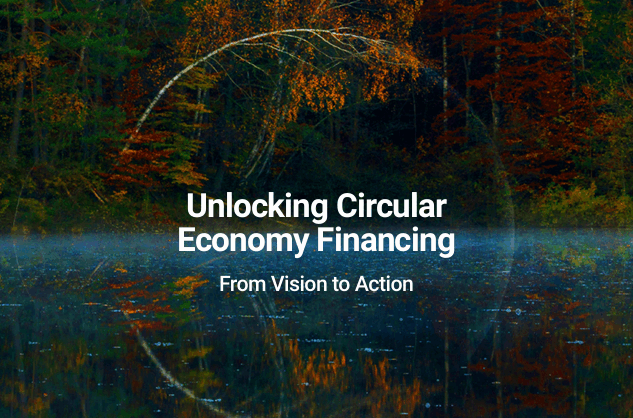Hampstead Heath and the battle over London’s green spaces – London Centric

Report on the Sustainable Management of London’s Public Green Spaces
Introduction: Aligning Urban Policy with Sustainable Development Goals
This report examines recent developments concerning the management and funding of public green spaces in London, specifically those overseen by the City of London Corporation. The analysis focuses on the implications of proposed commercialisation strategies for the United Nations Sustainable Development Goals (SDGs), particularly SDG 11 (Sustainable Cities and Communities), SDG 15 (Life on Land), SDG 8 (Decent Work and Economic Growth), and SDG 16 (Peace, Justice and Strong Institutions).
Commercialisation of Public Assets vs. Community Well-being
Case Study 1: Hampstead Heath and the Threat to Local Enterprise
The City of London Corporation has initiated a “competitive re-marketing process” for the leases of five independent cafes located in cherished public parks, including Hampstead Heath, Highgate Wood, and Queen’s Park. This policy, driven by a new funding model aimed at increasing “income generation” from open spaces, poses a direct challenge to several SDGs.
- SDG 11 (Sustainable Cities and Communities): The potential replacement of long-standing, affordable local cafes with commercial chains threatens Target 11.7, which calls for universal access to safe, inclusive, and accessible green and public spaces. These cafes function as vital community hubs, contributing to the social fabric and inclusivity of these public areas.
- SDG 8 (Decent Work and Economic Growth): The tender process places small, family-run businesses, such as the Parliament Hill Cafe which has operated for 42 years, at risk. This undermines the goal of promoting sustained, inclusive, and sustainable economic growth by favouring larger corporate entities over local enterprise.
- SDG 3 (Good Health and Well-being): Community opposition, which has garnered nearly 19,000 petition signatures and support from public figures, highlights fears that increased commercialisation will lead to higher prices, reducing the accessibility of these amenities for all citizens and negatively impacting the well-being derived from these spaces.
Governance and Institutional Accountability (SDG 16)
The City of London Corporation, a uniquely wealthy entity with over two billion pounds in assets, is proceeding with the tender process despite significant community opposition and a perceived lack of transparency. Stakeholders, including a dedicated cafe working group, report that requests for information on the tender process, criteria, and timetable have been denied, citing commercial confidentiality. This approach raises questions regarding the institution’s commitment to participatory decision-making and accountability, key tenets of SDG 16.
Case Study 2: Epping Forest and the Risk to Biodiversity
A new policy is also under consideration for other green spaces managed by the Corporation, including Epping Forest. A proposal has been put forward to appraise the 1,800 acres of “buffer land” surrounding the forest for its potential to generate income through commercial ventures, housing, or other development.
- SDG 15 (Life on Land): This buffer land was acquired to protect the ancient forest from development and pollution, safeguarding its delicate ecosystem. Re-designating this land for potential development directly conflicts with targets to protect, restore, and promote the sustainable use of terrestrial ecosystems and halt biodiversity loss. The Epping Forest Heritage Trust has expressed deep concern over the proposals.
- SDG 11 (Sustainable Cities and Communities): Developing green buffer zones would degrade the natural heritage that is essential for creating resilient and sustainable urban environments. It prioritises short-term financial gain over the long-term ecological health and recreational value of the capital’s largest green space.
Promoting Sustainable and Safe Urban Mobility (SDG 11)
The Challenge of Bicycle Theft to Sustainable Transport
The report also notes the issue of bicycle theft in London, which acts as a significant deterrent to achieving sustainable urban transport systems as outlined in SDG 11.2. The de facto decriminalisation of this crime undermines efforts to promote cycling as a safe and environmentally friendly mode of transport.
Policy Innovations for Urban Security
A proposed policy solution, “Operation Bike Bait,” involves the use of GPS-tracked decoy bicycles to apprehend thieves and dismantle organised criminal networks. This initiative aligns with SDG 16 by aiming to build more effective and just institutions to combat crime. Furthermore, a publicly available digital tool has been developed to streamline the review of CCTV footage, offering a technological solution to enhance law enforcement efficiency and support the creation of safer cities.
Conclusion
The current trajectory of the City of London Corporation’s management of its green spaces indicates a pivot towards commercialisation that conflicts with core principles of the Sustainable Development Goals. The prioritisation of income generation over community value, local enterprise, and ecological protection in Hampstead Heath and Epping Forest threatens London’s progress towards becoming a more sustainable, inclusive, and resilient city. Achieving the SDGs requires a governance model for public assets that is transparent, accountable, and balances economic considerations with the long-term social and environmental well-being of its citizens.
Analysis of Sustainable Development Goals in the Article
1. Which SDGs are addressed or connected to the issues highlighted in the article?
The article highlights several issues that connect to four main Sustainable Development Goals (SDGs):
-
SDG 8: Decent Work and Economic Growth
This goal is relevant through the discussion of local, independent businesses. The article details the financial struggles and closure of the restaurant Don Ciccio, which lost £200,000, and the potential displacement of five long-standing, family-run cafes on Hampstead Heath. These cases highlight the challenges faced by small and medium-sized enterprises (SMEs) in maintaining economic viability and providing local employment.
-
SDG 11: Sustainable Cities and Communities
This is a central theme of the article. The debate over the management and funding of London’s green spaces, such as Hampstead Heath and Epping Forest, directly relates to making cities inclusive, safe, resilient, and sustainable. The conflict between commercializing parks for “income generation” and preserving them as accessible public resources for community well-being is a key issue discussed.
-
SDG 15: Life on Land
The article touches upon this goal in its discussion of Epping Forest. The City of London Corporation’s proposal to appraise the forest’s “buffer land” for “opportunities for housing or other development” raises concerns about the protection of terrestrial ecosystems. This land was specifically acquired to protect the forest from development and pollution, making its potential sale a threat to biodiversity and conservation efforts.
-
SDG 16: Peace, Justice and Strong Institutions
This goal is addressed in two ways. Firstly, the section on bicycle theft, which has been “de facto decriminalised,” points to issues with law enforcement effectiveness and access to justice for victims of crime. Secondly, the conflict between the City of London Corporation and local residents over the park cafes highlights issues of institutional governance. The article mentions a “secret plan” and the Corporation’s refusal to meet with a community working group, raising questions about transparency, accountability, and participatory decision-making.
2. What specific targets under those SDGs can be identified based on the article’s content?
Based on the article’s content, the following specific SDG targets can be identified:
-
SDG 8: Decent Work and Economic Growth
- Target 8.3: Promote development-oriented policies that support productive activities, decent job creation, entrepreneurship, creativity and innovation, and encourage the formalization and growth of micro-, small- and medium-sized enterprises.
Explanation: The potential replacement of five independent cafes, such as the one run by Alberto d’Auria for 42 years, with larger chains due to a “competitive re-marketing process” directly challenges the growth and survival of small, local enterprises.
- Target 8.3: Promote development-oriented policies that support productive activities, decent job creation, entrepreneurship, creativity and innovation, and encourage the formalization and growth of micro-, small- and medium-sized enterprises.
-
SDG 11: Sustainable Cities and Communities
- Target 11.7: By 2030, provide universal access to safe, inclusive and accessible, green and public spaces.
Explanation: The entire debate revolves around this target. The article discusses plans to increase “income generation” from parks, which locals fear will lead to increased commercialization, higher prices (e.g., for a plate of chips), and potentially reduced accessibility for all community members, particularly those who value the affordable, community-focused nature of the current cafes. MP Tulip Siddiq is quoted saying the Heath “provides unprecedented access to green space for my constituents, many of whom lack access to gardens or green space of their own.” - Target 11.3: By 2030, enhance inclusive and sustainable urbanization and capacity for participatory, integrated and sustainable human settlement planning and management.
Explanation: The City of London Corporation’s decision-making process, which excluded the community’s “cafe working group” from discussions, demonstrates a lack of participatory planning. The community’s response, including protests and petitions, is a call for more inclusive management of these urban spaces.
- Target 11.7: By 2030, provide universal access to safe, inclusive and accessible, green and public spaces.
-
SDG 15: Life on Land
- Target 15.1: By 2020, ensure the conservation, restoration and sustainable use of terrestrial and inland freshwater ecosystems and their services, in particular forests.
Explanation: The proposal to review the 1,800 acres of “buffer land” around Epping Forest for potential development directly threatens the conservation of this vital urban forest ecosystem, which the land was acquired to protect. - Target 15.9: By 2020, integrate ecosystem and biodiversity values into national and local planning, development processes…
Explanation: The City of London’s appraisal of the buffer land for “opportunities for housing or other development” is an example of a development process where financial and commercial values may override the land’s established ecosystem and biodiversity value.
- Target 15.1: By 2020, ensure the conservation, restoration and sustainable use of terrestrial and inland freshwater ecosystems and their services, in particular forests.
-
SDG 16: Peace, Justice and Strong Institutions
- Target 16.3: Promote the rule of law at the national and international levels and ensure equal access to justice for all.
Explanation: The article explicitly states that “bicycle theft in London has been de facto decriminalised because thieves know there is effectively no chance of being caught.” This points to a breakdown in the rule of law and a lack of access to justice for victims of this crime. - Target 16.7: Ensure responsive, inclusive, participatory and representative decision-making at all levels.
Explanation: The City of London Corporation’s refusal to meet with the cafe working group, citing that the tenders were “commercially confidential,” is a direct contradiction of responsive and participatory decision-making. The community’s efforts, including a petition with nearly 19,000 signatures, represent a demand for their voices to be included in the process.
- Target 16.3: Promote the rule of law at the national and international levels and ensure equal access to justice for all.
3. Are there any indicators mentioned or implied in the article that can be used to measure progress towards the identified targets?
Yes, the article mentions or implies several quantitative and qualitative indicators:
-
Indicators for SDG 8 (Target 8.3)
- Number of local, independent businesses operating in public spaces: The article identifies five independent cafes at risk of being replaced. A decrease in this number would indicate negative progress.
- Financial loss of small businesses: The article mentions the £200,000 loss incurred by the owner of Don Ciccio, indicating the financial pressures on SMEs.
-
Indicators for SDG 11 (Targets 11.7 & 11.3)
- Affordability of services in public spaces: The price of chips (£3.50) is mentioned as a benchmark for affordability that locals fear will be lost, serving as an indicator of economic accessibility.
- Level of public participation in urban planning: The petition with “close to 19,000 signatures” is a direct quantitative indicator of public engagement and opinion on the management of green spaces.
-
Indicators for SDG 15 (Targets 15.1 & 15.9)
- Area of protected buffer land: The article specifies “1,800 acres of ‘buffer land'” around Epping Forest. Any reduction in this acreage for development would be a clear indicator of a failure to conserve the ecosystem.
-
Indicators for SDG 16 (Targets 16.3 & 16.7)
- Crime clearance rates: The statement that there is “effectively no chance of being caught” for bicycle theft implies an extremely low clearance rate for this type of crime, which could be measured.
- Institutional transparency and responsiveness: The City of London Corporation’s refusal to meet with the community working group is a qualitative indicator of a non-responsive and non-participatory decision-making process.
4. Create a table with three columns titled ‘SDGs, Targets and Indicators” to present the findings from analyzing the article. In this table, list the Sustainable Development Goals (SDGs), their corresponding targets, and the specific indicators identified in the article.
| SDGs | Targets | Indicators (Mentioned or Implied in the Article) |
|---|---|---|
| SDG 8: Decent Work and Economic Growth | 8.3: Encourage the growth of micro-, small- and medium-sized enterprises. |
|
| SDG 11: Sustainable Cities and Communities | 11.7: Provide universal access to safe, inclusive and accessible, green and public spaces. |
|
| 11.3: Enhance inclusive and participatory sustainable urban planning and management. |
|
|
| SDG 15: Life on Land | 15.1: Ensure the conservation and sustainable use of terrestrial ecosystems, in particular forests. |
|
| 15.9: Integrate ecosystem and biodiversity values into local planning and development processes. |
|
|
| SDG 16: Peace, Justice and Strong Institutions | 16.3: Promote the rule of law and ensure equal access to justice. |
|
| 16.7: Ensure responsive, inclusive, participatory and representative decision-making. |
|
Source: londoncentric.media
What is Your Reaction?
 Like
0
Like
0
 Dislike
0
Dislike
0
 Love
0
Love
0
 Funny
0
Funny
0
 Angry
0
Angry
0
 Sad
0
Sad
0
 Wow
0
Wow
0


















































.jpg.webp?itok=0ZsAnae9#)




/environment-climate-change-and-health-(ech)/water-sanitation-hygiene-and-health-(wsh)/landfill-tuvalu-36092.tmb-1200v.jpg?sfvrsn=5c21fe40_1#)


















